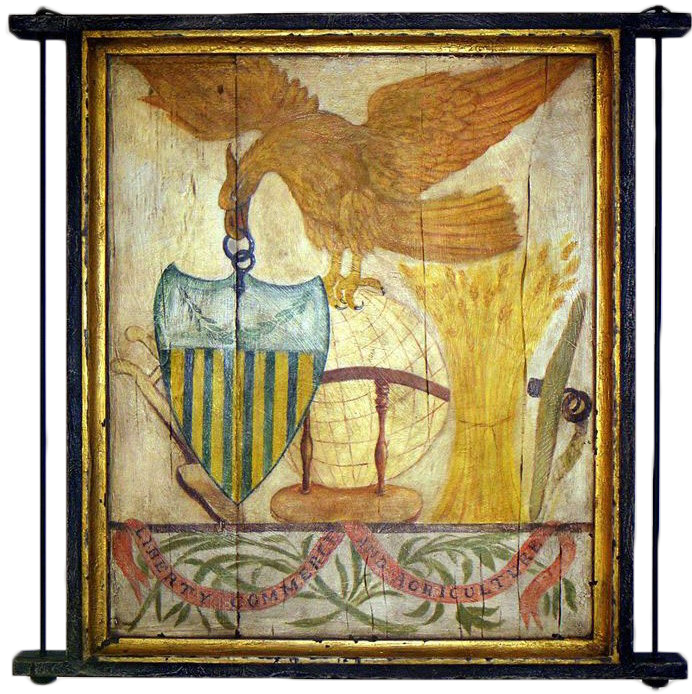Home » Liberty Commerce and Agriculture
Liberty Commerce and Agriculture

From Early American Life Magazine December 2011
When Port Jervis, New York based craftsman Peter Koenig began making trade and tavern signs, he found his greatest challenge was learning to throw the breaks on the impulse for artistic perfection. Many antique signs have more in common with the work you’d see taped to the wall in an elementary school art room than a professional gallery. For a classically trained realist painter like Koenig, the switch to the awkward style carried a learning curve.
“I used to spend years struggling and agonizing to get a figurative line correct,” Koenig explained with a laugh. “Now I had to make an arm that was the size of a body and other weird stuff. So I had a lot of learning to do in that way to make things look naive but believable. And that’s the charm to these pieces.”
Koenig drifted into sign work after finding some success reproducing antique picture frames. Eventually customers began asking for signs. He researched historical pieces and modern reproductions and felt he could do better. Although the simplistic images of tavern and trade signs weren’t much of an artistic challenge, Koenig found an area to “obsess” over, as he put it, one that colors his whole body of work. His signs are unique in that he channels his creative energies as much into the surface as the design. For Koenig, the antique pieces are attractive because they proudly sport their historical wear and tear…and reproducing the stress marks of time past is his main objective.
“Everyone is always screaming about the patina, the patina, the patina,” he said. “Ninety percent of the beauty of these pieces is certainly in the surface of it, the age of it, how it looks.”
His goal is for a surface that’s cracked and chipped, with different layers of past paint peeking out from the gaps and holes. However, many of the techniques for reproducing the antique look didn’t sit right with Koenig, so through trial and error he developed his own process. The right wood is key, and he prefers working with old barn wood. He begins each piece with a thick plastery paint for a base coat that works well on the cracked surface. As he paints on the design, he adds a series of oil glazes. But as paint goes on, it systematically comes off…Koenig is constantly distressing the surface as he goes.
“I use different tools, it could be anything that gives a mark to a ding or a chip,” he explained. “It could be an old farm implement. Or I use a chisel to pop the surface. I’ve even simulated bullet holes and worm holes with drill bits.”
That process results in signs that can cost as much as $2000, although simpler versions start at $150. To finish off the desired antique look, Koenig fastens his signs with metal hardware from the period. If he can’t find antique material, he’ll weather metal pieces using a variety of tricks, including soaking the pieces in vinegar or leaving them outside to take the brunt of the weather.
“You just have to use that Yankee ingenuity to find ways to do it,” Koenig said.
